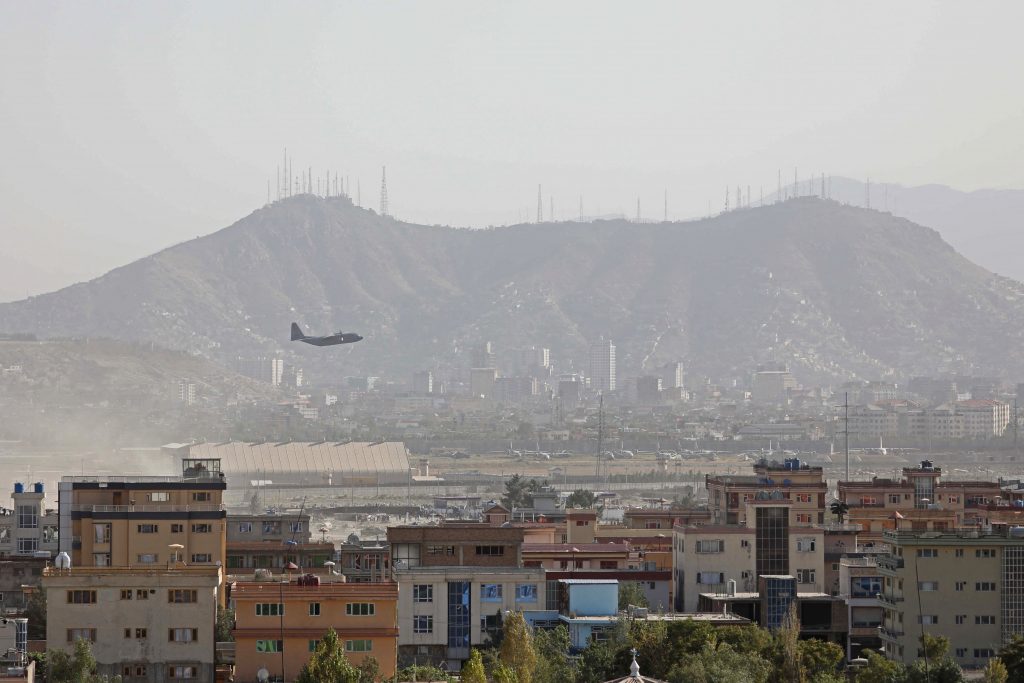
- ARAB NEWS
- 11 Jul 2025

TOKYO: One Japanese national was evacuated from Afghanistan to neighboring Pakistan aboard a Self-Defense Forces airplane on Friday amid heightened tensions after deadly explosions near Afghanistan’s main airport in Kabul.
On Thursday, the SDF also evacuated about a dozen of Afghans, government sources said Saturday. SDF personnel and others dispatched to Afghanistan on a mission to airlift Japanese nationals and local staff also left the strife-torn country.
The government plans to continue the mission to evacuate Japanese nationals in Afghanistan, including personnel of the Japan International Cooperation Agency, while closely watching the local situation. SDF transport aircraft will be stationed at an airport in the Pakistani capital of Islamabad, which serves as an air transport base.
The government had planned to evacuate several hundred Afghan personnel including those at the Japanese Embassy in Kabul. But the terrorist bombing attacks on Thursday, for which Islamic State militants claimed responsibility, made the outlook for the mission uncertain.
The evacuated Japanese national is Hiromi Yasui, a 57-year-old female staff member of Kyodo News, according to the Japanese news agency.
On Monday and Tuesday, the government dispatched three Air SDF transport aircraft for the evacuation mission, after the Taliban took control of Afghanistan this month.
But the mission hit a snag as some people who wish leave Afghanistan did not arrive at the airport in Kabul, the capital of the country.
Some within the ruling coalition have accused the Japanese government of lacking foresight and being late in initial response.
Earlier on Friday, Prime Minister Yoshihide Suga discussed the government’s response on related issues with Takeo Akiba, secretary-general of the National Security Secretariat, and senior officials from the foreign and defense ministries.
Japan’s Chief Cabinet Secretary Katsunobu Kato told a news conference later, “The (local) situation is fluid and unpredictable.”
U.S. President Joe Biden has reiterated that the U.S. troops will completely withdraw from Afghanistan by the end of this month as planned.
“What we can do (in Afghanistan) is limited,” Japanese Defense Minister Nobuo Kishi said at a news conference earlier on Friday. “In effect, our mission can only run until today.”
Japan has sent a total of 260 personnel from the ASDF and the Ground SDF to be stationed at the airport in Kabul and Islamabad.
Kishi said that the airport’s safety has been secured and that all SDF members sent for the evacuation mission are safe.
Some people within the SDF, however, have voiced concerns that terrorist organizations may take advantage of the turmoil to attack aircraft leaving or arriving at the airport in Kabul.
SDF members coordinating with the U.S. military and others, as well as personnel from Japan’s defense and foreign ministries, worked at the airport until the ASDF’s final flight.
Part 4 of Article 84 of the SDF law allows the SDF to airlift Japanese nationals and others in times of emergency overseas on condition that the transport mission can be conducted safely. The terrorist attacks in Kabul has made it difficult to say the condition is being satisfied.
A senior SDF officer said of Friday’s evacuation support, “We did all we could in a limited period of time.”
“Things may have turned out differently if (the ASDF aircraft) had been dispatched earlier,” another SDF executive said. “Front-line leaders of the mission must have faced a tough decision as they also had to secure the safety of SDF staff.”
JIJI Press